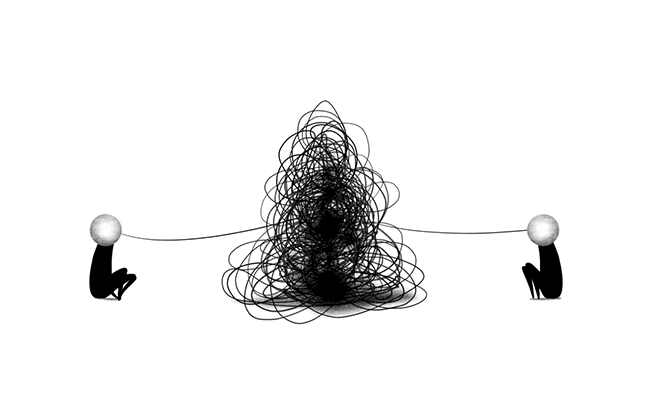When you want to connect with someone on a deeper level, aim to listen for and pick up on the emotions you hear coming through. Then reflect them back to your conversation partner. We call this technique Reflection of Feeling.
Psychologist Dr Ann Vertel explains that when you “reflect back to someone what they are feeling, you meet them right where they are emotionally. You’ve connected with them, they don’t feel quite so alone with this feeling”.
👁️🗨️ Identifying and putting those feelings into words helps strengthen your connections, deepen your conversations and improve your understanding.
GIF by Nina Tsur.
There are three easy steps you can follow:
✅ Step 1: Listen closely to what the other person is saying, and how they’re saying it.
✅ Step 2: Identify what they’re saying, and how they appear to be feeling when they say it. Imagine yourself as a human highlighter — you want to pick up on and highlight emotions you hear coming through, even when they don’t verbalise them.
✅ Step 3: Offer a response that reflects what they’ve said and the associated underlying emotions you’re picking up.
⚠️ Although this technique is referred to as a ‘reflection’, avoid repeating what you’ve heard word for word in your reply (also known as parroting).
In fact, one of the early advocates of this technique, Carl Rogers, later raised concerns over its name.
Rogers wrote that “From my point of view as a therapist, I am not trying to ‘reflect feelings’. I am trying to determine whether my understanding of the client’s inner world is correct”.
Reflecting a feeling is actually testing your understanding and checking your perceptions.
💡 Paraphrase instead of parroting
Rather than repeating what’s already been said, try paraphrasing to put your own words to the feeling.
Paraphrasing reinforces your understanding, and shows your conversation partner that you’re processing how they are feeling and what they are saying.
It’s also a more human way to respond. Parroting can sound robotic, and seem insincere. Being yourself opens up the conversation and establishes trust.
GIF by Erick Oh.
How to identify a feeling
Identifying a feeling can itself be a tricky task. This Emotion Wheel created by Dr Robert Plutchik is a useful way to expand your vocabulary of different emotions.
Take a look at Plutchik’s Emotion Wheel below – which emotional terms resonate with you?
🗝️ Your key takeaway
Reflecting a feeling is more than just repeating what you’ve heard. It’s identifying the feelings and messages shared by your conversation partner, and putting them in your own words when you reply. The result? Deeper, more meaningful conversations and greater understanding.
💬 What do you think?
Which emotions listed on Plutchik’s Emotion Wheel have you experienced in the past week? Are there any important emotions Plutchik’s Wheel misses out?



